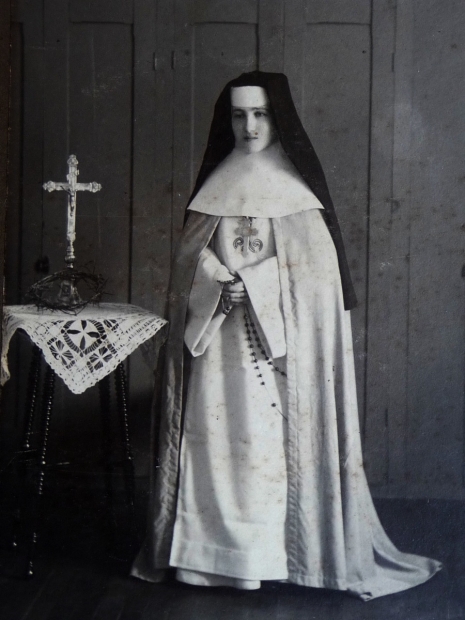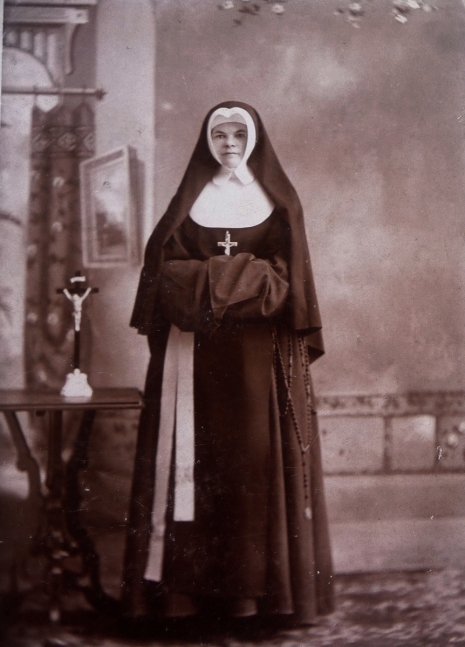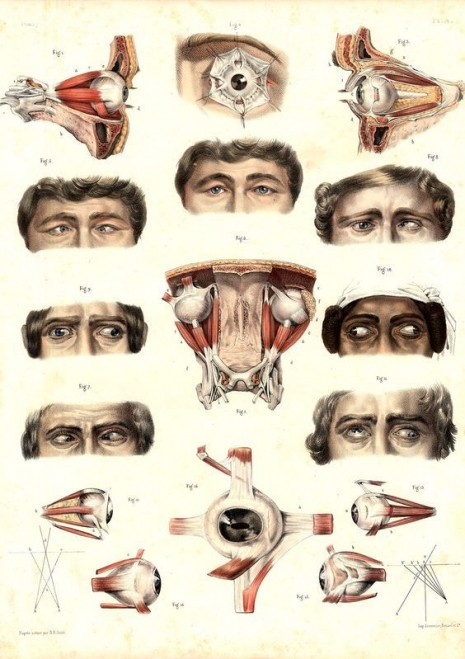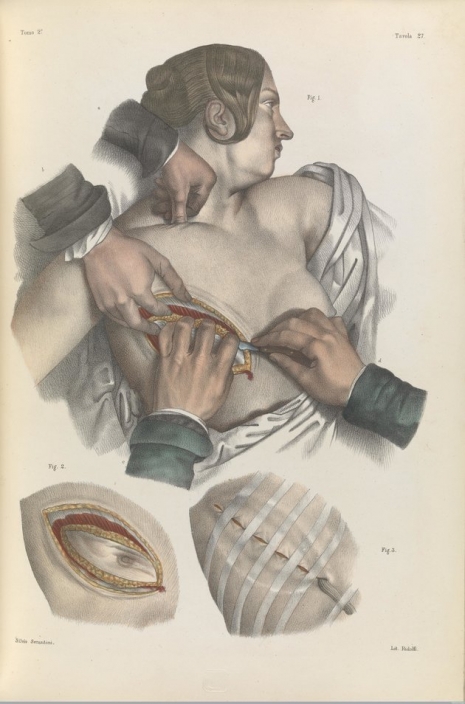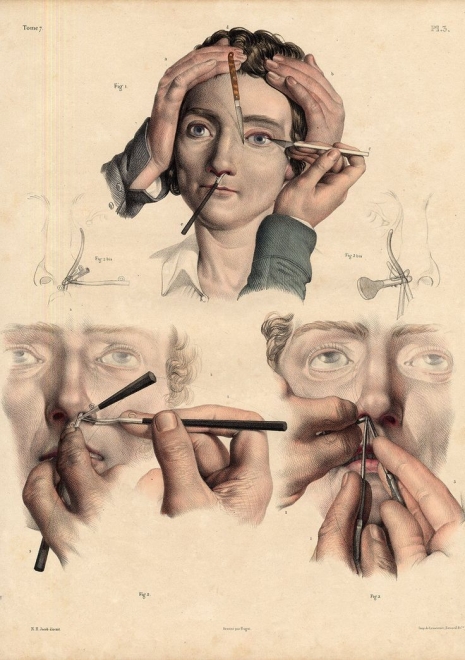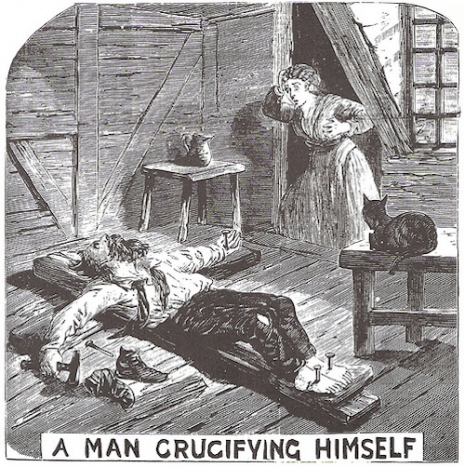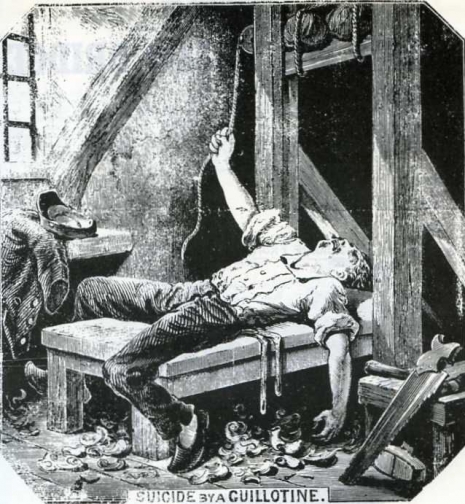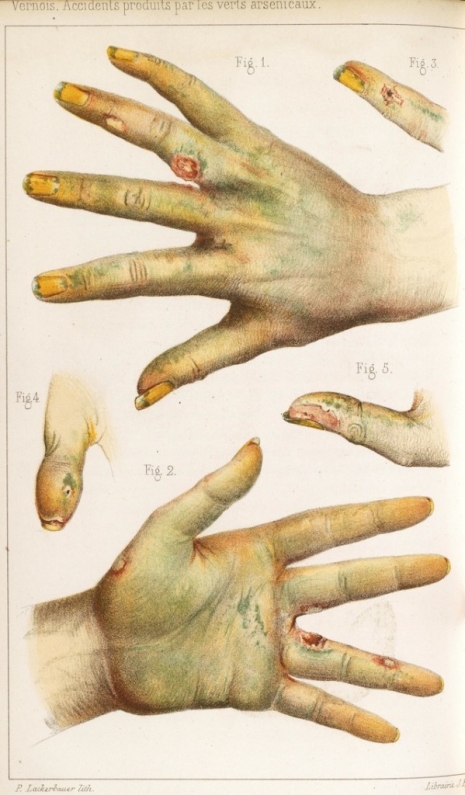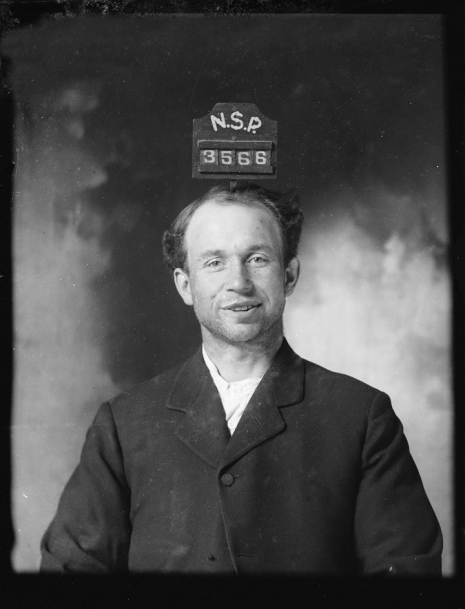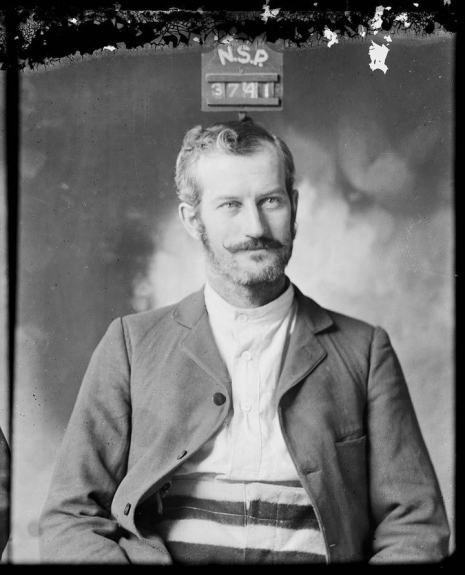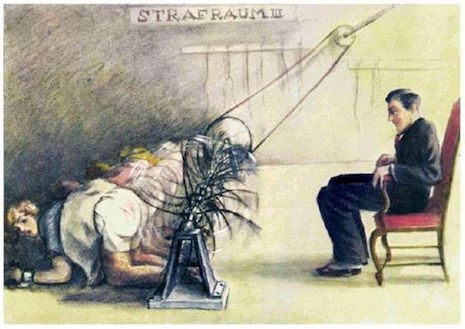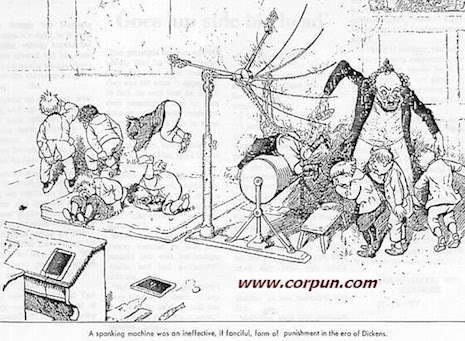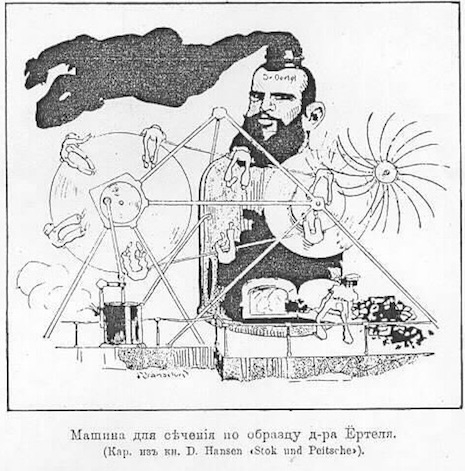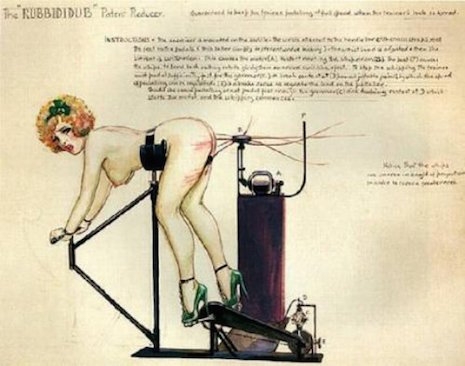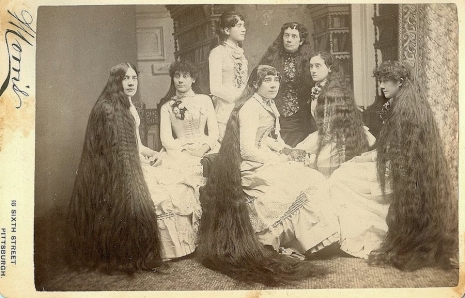
A promotional photo of the Sutherland Sisters.
The Sutherland Sisters were all born sometime between 1845 and 1865 in a poor, rural farming community in Cambria, New York. The Sutherland family owned a turkey farm which the girls all worked on, though their barefoot farming days would be short-lived. After their mother passed away in 1867, their father, Fletcher Sutherland—a notoriously lazy and unmotivated man who had inherited the farm from his multi-talented father—would spend the rest of his life trying to get rich by pimping his daughters out in various ways including as a musical act. A huge part of the girl’s appeal was the fact that between the seven of them, they possessed 37-feet of hair—an incomprehensible number when, if you do the math quickly in your head, would translate to each sister having at least five feet of hair on her head. Their musical performances would always conclude with their father commanding them to “Let down your hair!’ which they did to the delight of their legions of fans.
While I’m on the topic of the girls’ somewhat disturbing amount of hair, I’d be remiss if I didn’t mention their dear mother’s homemade hair tonic which apparently helped her daughters grow hair like weeds. While she was still alive, Mrs. Sutherland would apply her unique “hair growth” tonic (which was made up of bay rum, witch hazel, salt, magnesia and hydrochloric acid), to her daughters’ luxurious hair. Apparently, the crazy concoction Mrs. Sutherland Frankensteined together in her kitchen smelled horrific, and this led to the girls being treated as social outcasts at school. There may have been a sense of collective relief between the sisters after their mother passed as it meant that the mysterious hair tonic, went to the grave along with her.
The shortest hair of all of the siblings belonged to the oldest sister, Sarah whose dark mane measured three feet in length. The record for the longest hair of the seven sisters would go to Victoria who quite literally had to drag seven-feet of hair along with her at all times. The rest of the girls’ hair varied in length from four and a half to six-plus feet each, and their fantastic tresses would attract oglers from all over. As I mentioned, the Sutherland Sisters were also a musical act that performed together under the name of the “Seven Sutherland Sisters” and by all historical accounts were quite talented, though there is no doubt that the real reason that their musical performances played to packed venues was due people wanting to get a look at their storied, Rapunzel-esque locks.
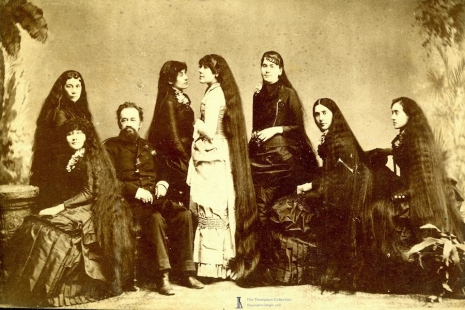
A group photo of the ‘Seven Sutherland Sisters’ and their father Fletcher Sutherland (pictured third from the left).
The girls’ greedy, opportunistic patriarch quickly realized the cash potential of exploiting his daughters’ alarmingly-long hair and came up with a scheme that would make the family rich beyond their wildest dreams. The crafty Fletcher whipped up his late wife’s repulsive smelling hair tonic and marketed it as the “Greatest Hair Tonic on Earth.” Fletcher sold over 2.5 million bottles of the tonic with the help of his daughters who embarked on a non-stop promotional tour across the country, which would draw throngs of curious onlookers as well as customers willing to shell out as much as $1.50 for a bottle of the fabled hair-growth tonic, a huge sum of money for anything, especially something that wasn’t considered a necessity, at the time. They were also popular attractions at circuses including Barnum & Bailey’s Greatest Show on Earth, where they were billed by P.T. Barnum as “The World’s Greatest, Most Pleasing Wonders.” The girls were often solicited by individuals who would make grandiose financial promises to them in exchange for some of their hair. But for the first time in their poverty-riddled lives, the Sutherland sisters didn’t need cash as the sale of the tonic and other hair products, which, by 1890 would earn them an astonishing three million dollars in less than five years time. But like a lot of stories that involve people who have hit the financial “jackpot” so-to-speak, the lives of the Sutherland sisters would soon embark on a slow, sad slide downhill.
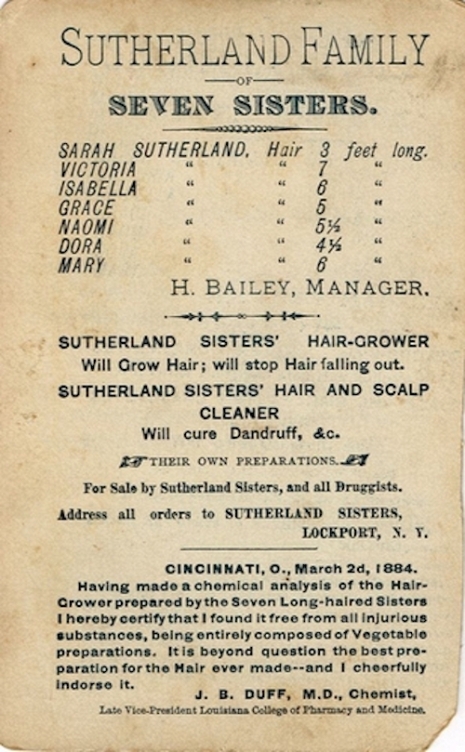
An ad for the Sutherland Sisters ‘Hair and Scalp’ cleaner that included the astonishing measurements of each sister’s hair length.
After Fletcher passed away in 1888, the girls all moved back into a mansion that they had built on the very site where their old farmhouse once stood. No expense was spared when it came to the construction of their new home which had fourteen rooms filled with lavish European furniture and even running water, which was a bonafide luxury reserved for the wealthy at the time. Each sister had their own maid who was required to take the very best care of their world-famous hair. Before the construction of the mansion was complete, the sisters would suffer another loss—the death of sister Naomi. Though devasted by her passing, it wouldn’t stop the girls from continuing to live their chosen lifestyle, which now routinely included a steady diet of booze, drugs, non-stop parties and sex orgies which were in stark contrast to their church-going, good-girl images. Other rumors surrounding the girls included the notion that they actively practiced witchcraft—which while it wouldn’t exactly get you burned at the stake like the good-old-days—was still not considered a respectable pastime. Mary, the youngest, who had long suffered from profound psychological issues, became progressively worse and would often spend her days locked away in a room in the mansion before she was formally committed an insane asylum in Buffalo, New York.
Frederick Castlemaine, a French nobleman and noted opium and morphine addict who was pursuing Dora Sutherland (the “pretty” sister), would end up dumping poor Dora and instead would propose to her older sister Isabella and her six feet of hair. The unstable, drug-addled Castlemaine would later commit suicide during one of the sisters’ promotional tours. Victoria Sutherland, who during good times would adorn her nails with diamonds, was evicted from the home by her siblings in disgust after she married a nineteen-year-old suitor who was nearly 30-years her junior. Sarah Sutherland would pass away in 1919 and Dora would be killed in a car accident near Hollywood that same year while her remaining sisters were trying to entice a movie studio into making a film based on their remarkable lives. The advent of the uber-stylish hairdo known as the “Bob” in 1920 would deliver the final death-blow to the family as their long hair was now considered completely out of vogue. The sisters would all die penniless including Grace who, along with her five feet of hair, outlived all of her siblings, and would end up being buried in an unmarked pauper’s grave after passing away at the age of 92.
I’ve posted some photos of the Sutherland Sisters below as well as some other historical artifacts associated with their mythical hair below.
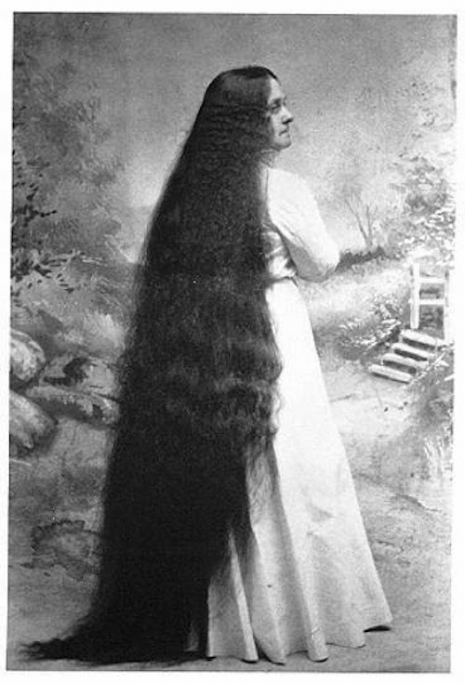
Dora Sutherland.

Grace Sutherland.
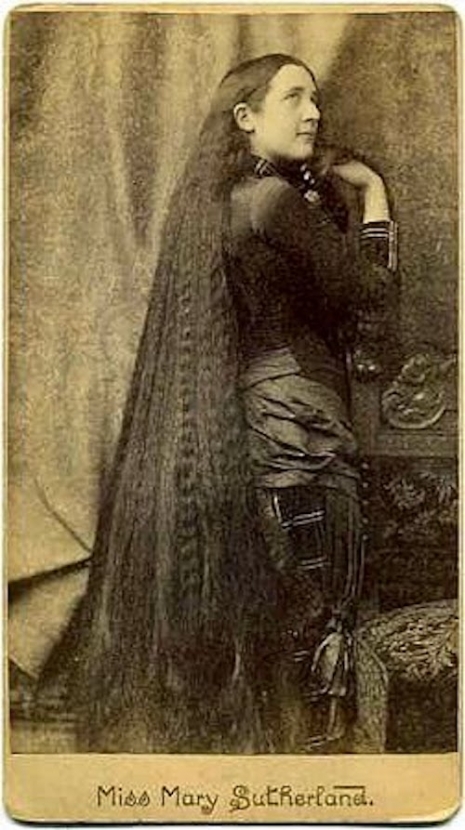
Mary Sutherland.
More after the jump…















